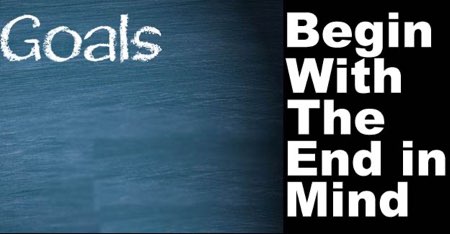S&OP and Stephen Covey part 2: Begin with the End in Mind

In our recent article Towards an effective S&OP with Stephen Covey, the power of Covey’s bestselling theory was applied to Sales & Operations Planning. We used Habit 3, “Put First Things First”, to make a high level design of an effective S&OP process. In this follow-up article, we will demonstrate that it is equally important to apply Covey’s Habit 2 as well: “Begin with the End in Mind”.
At first sight, implementing and running S&OP seems simple. There are many standard textbooks that describe a straightforward process consisting of a Demand Review, a Supply Review, possibly a pre-S&OP and an executive S&OP meeting. The process requires senior management commitment and cross-functional participation. How difficult can it be?
The simple answer: difficult.
There are many reasons and common pitfalls that can hinder the effectiveness of S&OP in practice, listed e.g. in Ten common S&OP pitfalls. By far the most important pitfall in our view is linked to Covey’s advice to begin with the end in mind. Covey states that effective people know what they want to achieve; they have a clear vision and somehow they will put that vision into practice. Do they know how they will get there right from the start? Hardly ever. Will they use standard textbooks to realise their visions? Probably, but it is highly unlikely that they will bring these theories into practice one on one. They may use some of them for inspiration and to learn from others, but real leaders will cherry pick, use, misuse and bend the rules in order to realise their visions. They will always keep the end in mind.
Experience shows that there is a clear parallel with S&OP. The symptoms: difficult to get buy-in, participation driven largely by a heavy push from sr. management, an S&OP owner who is struggling to keep participants engaged, long agendas resulting in even longer meetings and a general feeling that the process is not really contributing to the company’s overall objectives. The pitfall: implementing or running S&OP without a clearly defined and agreed purpose. S&OP has not been designed with the end in mind.
This may seem like stating the obvious, but apparently it is not. S&OP may be simple, but it is certainly not easy. Why otherwise are so many professional and mature companies struggling to unleash the power of S&OP and getting the KPIs moving? Covey’s return questions would probably be:
- Have you defined the KPIs that S&OP should move in the first place?
- Do all stakeholders really believe that the objectives are the right ones and is there enough in it for all of them?
- Have the processes, the participants, the agendas, the frequencies, the templates and all other S&OP ingredients been defined and selected to realise these specific objectives?
- Are these objectives regularly reviewed and is S&OP adapted in case of changing business requirements?
In case the answers to one of these questions is no, it is time to take action and get this corrected. Because an S&OP process that is not aligned with the business strategy and that is not continuously being reinvented is like a solution looking for a problem. With only two realistic options: stop it altogether or redefine it, but this time following Covey’s advice and beginning with the end in mind!


